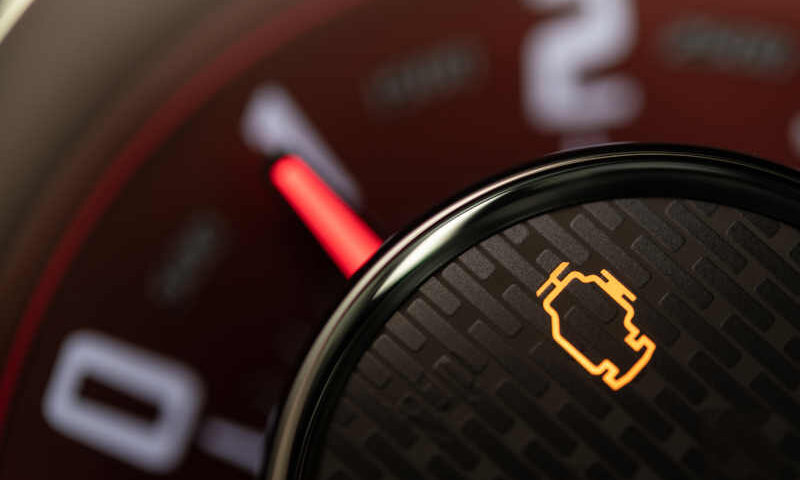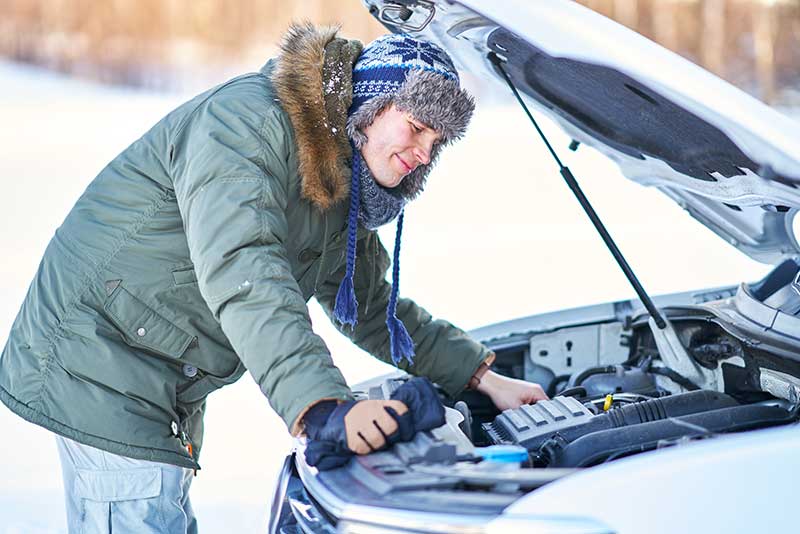8 Causes of Check Engine Lights on in Cars and What to Do About Them

3 Reasons Winter Can Cause Noisy Brakes
February 6, 2023
6 Important Signs Your Car Battery Needs to Be Replaced
April 4, 2023Nobody wants their check engine light to illuminate. Although having a car problem might be frustrating, being aware of potential difficulties will help you keep prepared. Here are 8 causes for your check engine light (CEL) to be on and what you can do to fix them.
-
Spark Plugs and Wires for Spark Plugs
The check engine light may come on if your spark plugs or spark plug wires aren’t working properly. Your engine generates power by igniting the gasoline and air. If any of these components are broken, your engine may perform poorly or perhaps cease working completely. Fortunately, spark plug replacement is simple and reasonably priced.
-
Catalytic Converter
You have a more serious issue on your hands if your catalytic converter is the cause of your check engine light. A malfunctioning catalytic converter is typically caused by an underlying problem with spark plugs or oxygen sensors because it doesn’t require routine maintenance. In the future, worse issues may arise if these fixes are neglected.
-
EGR Valve
Gas passage from the exhaust manifold to the intake manifold is regulated by the exhaust gas recirculation (EGR) valve. If the valve notices a gas flow that is higher or lower than usual, your car’s check engine light can come on. This occurs when the valves become stuck as a result of carbon buildup. EGR valves don’t require routine maintenance, thus they typically become blocked when your engine has another issue.
-
A Leaky Vacuum
Another potential cause of your check engine light is a vacuum leak. The rubber linings of the vacuum deteriorate or split when this occurs. Your car’s vacuum is linked to numerous other components, including the brake booster, heating and air conditioning vents, exhaust, and cruise control. You most likely have troubles with one of these parts if you have a vacuum leak.
-
Missing or loose fuel cap
Vapors cannot leave the gas tank thanks to your gas cap. Your car will alert you by turning on the CEL if your gas cap is damaged or missing. Driving with a damaged or missing gas cap can have a major impact on fuel efficiency and pollution. Fortunately, this is a simple and inexpensive repair.
-
Sensor for Oxygen
The oxygen sensor in your car measures the amount of oxygen in the exhaust. This informs your car of how much fuel it requires to run. Your car will believe it requires more fuel than it actually does if the sensor isn’t functioning, and the check engine light will come on. Poor gas mileage can result from delayed maintenance. Additionally, other engine components could sustain damage, costing thousands of dollars in repairs.
-
Battery
The check engine light will undoubtedly come on if the battery is defective. Your car’s battery is crucial to starting and running, therefore you should take care of this right away. When inspecting vehicles, our mechanics at Road Runner Auto Care are able to test the batteries.
-
MAF Error
Another possible cause of your CEL being on is a malfunctioning mass air flow (MAF) sensor. The amount of air entering the engine is measured by this sensor. Your automobile won’t know how much fuel it needs if it isn’t functioning. Your catalytic converter, spark plugs, or oxygen sensor may all have issues as a result of a bad MAF sensor.
As you can see, your check engine light warns you of a variety of car problems, many of which are challenging to identify. In response, we are here. At Road Runner Auto Care, our specialists are available to assist. Call us right away to make an appointment. We are eager to offer you excellent service.


